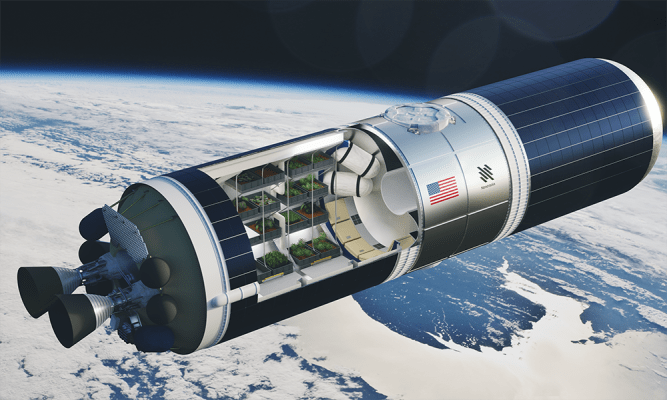Nanoracks just made space construction and manufacturing history with the first demonstration of cutting metal in orbit. The technique could be critical for the next generation of large-scale space stations and even lunar habitats.
The experiment was performed back in May by Nanoracks and its parent company Voyager Space, after getting to orbit aboard the SpaceX Transporter 5 launch. The company only recently released additional details on Friday.
The goal of Outpost Mars Demo-1 mission was to cut a piece of corrosion-resistant metal, similar to the outer shell of United Launch Alliance’s Vulcan Centaur and common in space debris, using a technique called friction milling.
Welding and metal-cutting is a messy operation on Earth, but all of that dust and debris simply falls to the ground. However, “when you’re in space, in the vacuum, it doesn’t really do that. It doesn’t just float away necessarily either,” Marshall Smith, Nanoracks’ senior VP of space systems, explained to TechCrunch back in May. “What you want to do is to contain this debris, not necessarily because it might be a micrometeorites issue, which it could be as well, but mostly because you want to keep your work environment clean.”
The entire demonstration lasted around one minute. The main goal — to cut a single small sample of the steel — was successfully completed. Inside the spacecraft were two additional samples to cut as a “reach goal,” and Nanoracks is investigating why they weren’t cut as well.
It was conducted in partnership with Maxar Technologies, who developed the robotic arm that executed the cut. That arm used a commercially available friction milling end effector, and the entire structure was contained in the Outpost spacecraft to ensure that no debris escaped. Indeed, one of the main goals of the demonstration was to produce no debris — and it worked.
Nanoracks used a type of metal similar to an upper stage of a rocket precisely because the company’s long-term goal is to modify used upper stages and convert them into orbital platforms, or what it calls “outposts.”
“We are constantly launching upper stages,” Smith said. “Imagine long term, you could go collect one. two, three, four of these and push them around so that they’re in contact with each other and you can join them together and create large structures that can be used for a number of options.”
According to Smith, this is just the beginning. In the future, Nanoracks will attempt cuts on a larger scale in its quest to eventually conduct larger construction efforts.
In addition to the Outpost program, Nanoracks and Voyager have partnered with Lockheed Martin to develop a commercial space station, which the group is calling Starlab. NASA selected the group to further develop its plans under the agency’s Commercial low Earth orbit Destinations program, for a contract valued at $160 million. Blue Origin and Northrop Grumman were also awarded contracts.
